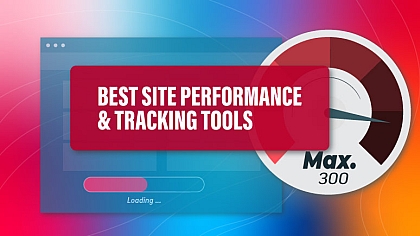
How a Website Redesign Can Give You an Edge Over Competitors
In today’s rapidly evolving digital landscape, a website redesign isn’t just about making your website look good. It's about making it work better for your business, customers, and, ultimately, your bottom line. For businesses of all sizes, staying competitive online requires more than simply maintaining a website. A well-planned redesign can enhance user experience, improve search engine rankings, and offer a significant advantage over competitors.
Read on to find out why website redesign is essential, key areas to focus on, and actionable steps to make it a successful project.
Why Redesign Your Website?
- Staying Relevant to Users’ Expectations
Trends and technology are continually changing, as are user expectations. A website that looks and functions the same way it did five years ago may come across as outdated and unappealing. A redesign allows businesses to integrate the latest design trends, user-friendly layouts, and advanced functionalities that meet modern-day users’ needs. - Improving User Experience (UX)
User experience is now one of the primary factors that influence a website’s success. A well-executed redesign focuses on improving navigation, accessibility, speed, and usability, all of which lead to better engagement and conversions. - Boosting SEO Performance
Search engines prioritize websites that offer a seamless user experience. Redesigning with SEO in mind can improve site rankings, increase visibility, and bring more organic traffic to your business. Factors like mobile responsiveness, page load speed, and optimized content are critical to search engine optimization and are often addressed during a redesign. - Enhancing Brand Identity
As businesses grow, their brand identity evolves. A redesign can help align the website’s look and feel with a refined brand message, making it easier to convey brand values and differentiate from competitors. - Keeping Up with Competitors
If your competitors are consistently updating their websites, it’s a signal that staying fresh online is important in your industry. An outdated website risks driving customers to competitors who offer a more engaging and modern online experience.
Key Elements to Focus On During a Website Redesign
- User-Centric Design
Put the user’s needs at the forefront of the redesign process. Ensure the layout is intuitive, visually appealing, and accessible to everyone, including those with disabilities. Use tools like heatmaps and analytics to study user behaviour on your current site and identify areas for improvement. - Mobile Optimization
With over half of all web traffic coming from mobile devices, mobile optimization is crucial. A responsive design ensures your site adapts to different screen sizes, providing a seamless experience on smartphones, tablets, and desktops. - Faster Page Load Times
According to Google, the probability of users bouncing increases by 32% as page load time goes from 1 to 3 seconds. Optimize images, use efficient code, and implement caching to ensure your website loads quickly and smoothly. - SEO Best Practices
A website redesign is an excellent opportunity to integrate the latest SEO strategies. Focus on elements like keyword optimization, meta tags, URL structure, and internal linking. Make sure the website’s technical SEO, such as schema markup and XML sitemaps, is also up to date. - Content Quality and Readability
Content is a major part of user engagement and SEO. During the redesign, review and update existing content to ensure it remains relevant, valuable, and easy to read. A clear font hierarchy, sufficient white space, and strategic use of images enhance readability and make the content more engaging. - Security Features
With the rise in cyber threats, website security is a top priority. Secure Socket Layer (SSL) certificates are essential for data encryption, and implementing firewalls and security plugins can further protect against threats. Many users consider website security a factor in trusting a brand, so addressing it during a redesign is essential.
Steps for a Successful Website Redesign

- Conduct a Website Audit
Before jumping into a redesign, evaluate your current website's performance. Tools like Google Analytics, SEMrush, or Ahrefs can help you analyze metrics like page load times, bounce rate, top-performing pages, and user engagement. This information will guide your redesign decisions. - Set Clear Goals
Identify what you want to achieve with the redesign. Goals may include reducing bounce rates, improving conversion rates, enhancing mobile usability, or aligning with a rebranded image. Clear objectives will keep the redesign focused and prevent unnecessary changes. - Analyze Competitor Websites
Analyzing competitor websites is essential to stay competitive. Identify features and design elements that work well and consider how you can implement or improve them. However, avoid copying competitors directly; instead, use these insights to innovate. - Create a Sitemap and Wireframes
A sitemap outlines the structure of your redesigned website, while wireframes provide a visual guide to the layout of individual pages. These elements are critical in planning the site’s user flow and ensuring the redesign meets both user and business goals. - Focus on Visual Design and Branding
Your website’s design is often the first impression of your brand. Ensure consistency in colour schemes, typography, and imagery that align with your brand identity. Use modern design principles, such as minimalism or dynamic content, to create a clean and professional look. - Implement and Test
Once the redesign is developed, conduct thorough testing to ensure everything functions correctly. Testing should cover usability, functionality, mobile responsiveness, and SEO aspects. Tools like Google’s Mobile-Friendly Test and PageSpeed Insights can help identify areas for improvement. - Gather Feedback and Make Adjustments
After launching the redesigned site, gather feedback from users, customers, and team members. This feedback will reveal areas for improvement and guide further optimizations. - Monitor Performance
Post-launch, monitor the site’s performance closely to see how it meets the goals you set. Track metrics like page load speed, SEO ranking changes, user engagement, and conversion rates to assess the redesign’s effectiveness.
Examples of Successful Website Redesigns
- Airbnb
Airbnb’s redesign focused on a clean, minimalistic user interface that streamlined the booking process and prioritized high-quality visuals. The redesign significantly improved user engagement and booking rates by enhancing the overall UX. - Slack
Slack's redesign introduced a more intuitive navigation structure and a customizable interface, making it easier for teams to access and organize information. This redesign led to increased usability, a factor that contributed to the platform’s popularity among business users. - HubSpot
HubSpot’s redesign aimed to align its brand identity with a more approachable, user-friendly design. By simplifying the navigation and optimizing the homepage layout, HubSpot improved user engagement and reduced bounce rates.
A website redesign is a powerful tool to stay competitive in today’s digital-first world. By focusing on user experience, mobile optimization, SEO considerations for website redesigns, and brand alignment, a redesign can transform your website into a valuable asset that attracts and retains customers. Remember, a successful redesign isn’t just about aesthetics – it’s about improving functionality and aligning with business goals. With the right approach, a redesign can help you not only keep up with competitors but surpass them.
For businesses considering a redesign, it’s beneficial to work with a skilled team or agency with experience in web design and digital marketing. The investment is likely to yield dividends as you position your brand for greater success in an increasingly competitive online landscape.














